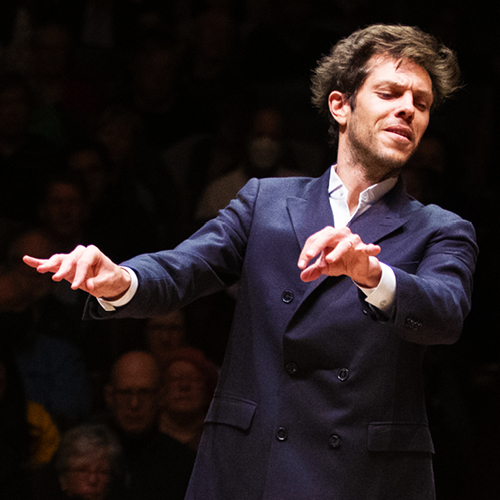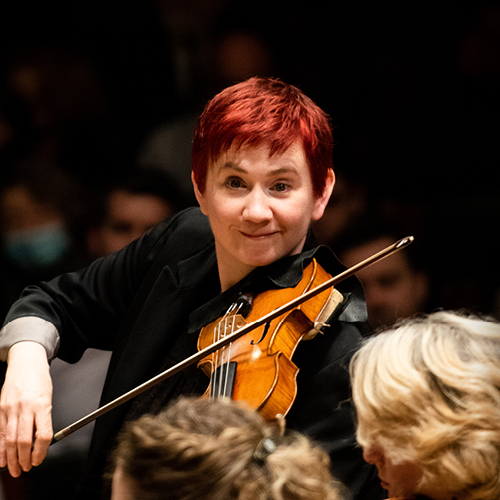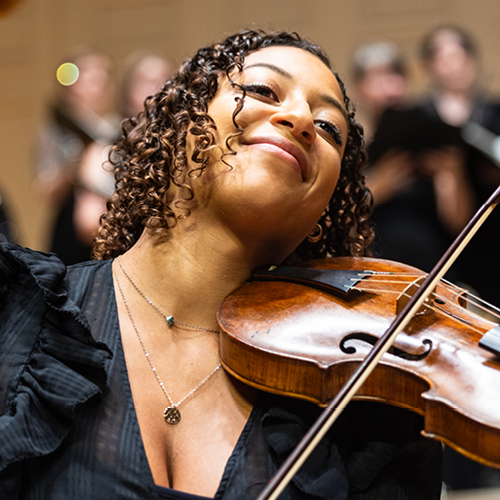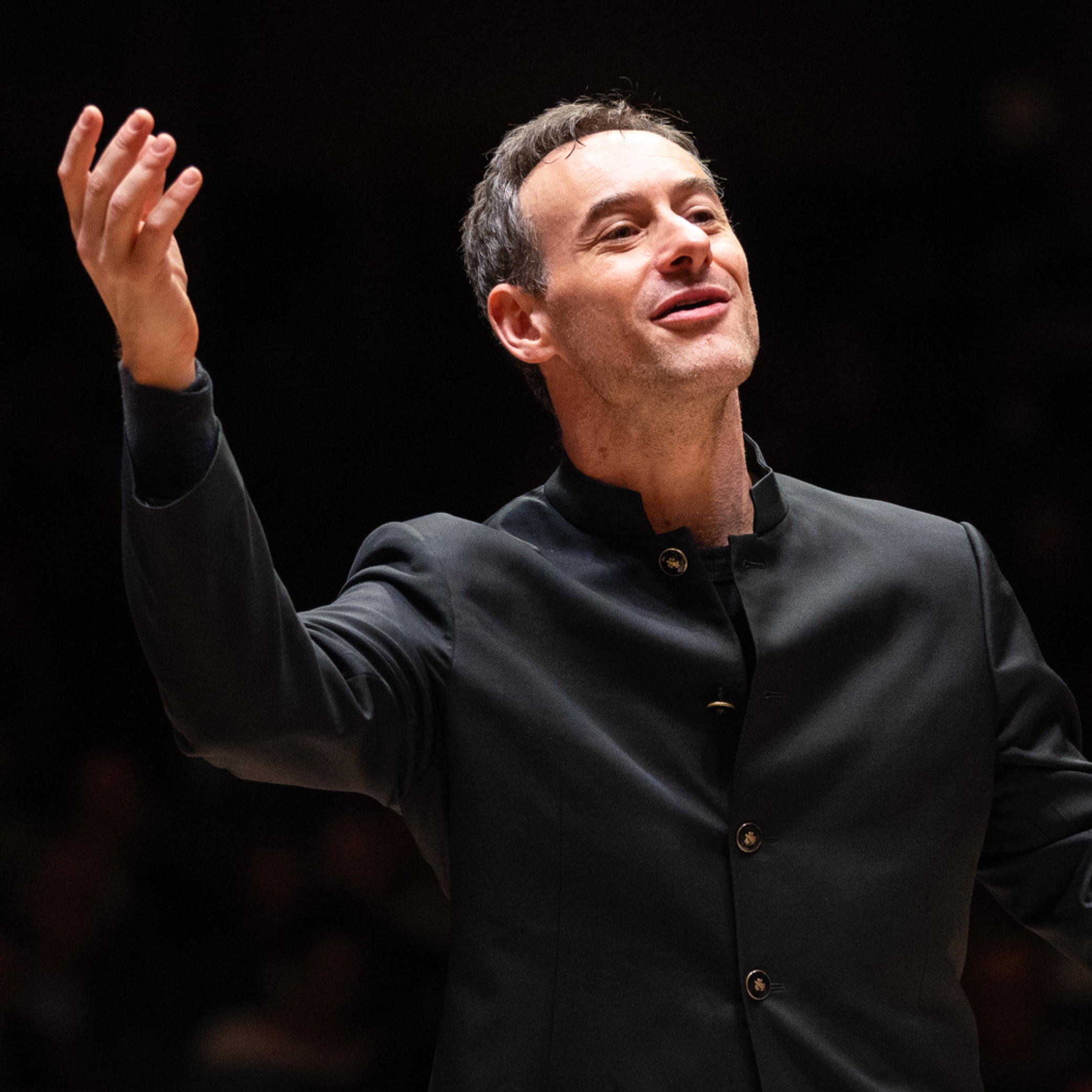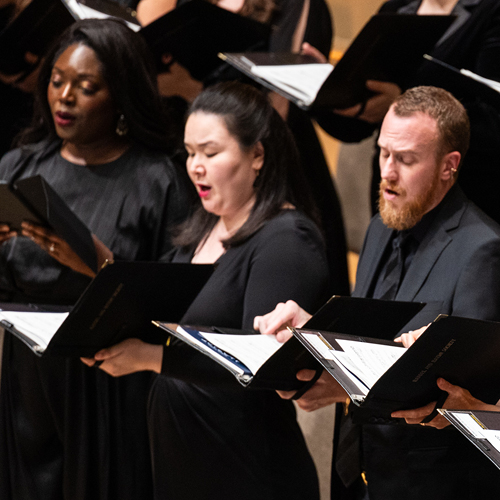On May 6, WHRB presented the “What Could Have Been” Orgy, a celebration of the Boston area’s classical musicians and the concerts that they should have performed. This Orgy was dedicated to all the concerts that have been interrupted, all the performing arts organizations facing difficult choices, and all the musicians who have had to reimagine their music-making.
We hoped to showcase the incredible diversity of musical Greater Boston and to highlight the resilience and adaptability of our community’s classical ensembles. You heard reflections on performing in an empty concert hall, on the brave new world of the virtual concert hall, and on the implications of a socially-distanced future for our most intensely communal collective endeavor. You heard the inspiring story of a doctor and musician who has founded two initiatives to bring music to both patients and nurses at the front lines of the crisis, the story of a refugee composer whose world premiere was cancelled, and the stories of musicians who are finding ways to connect with audiences from all around the world—to let the show go on.
Listen to the interview with H+H Artistic Director, Harry Christophers.
Read the full article here or read a transcript of this interview with Harry Christophers below.
The “What Could Have Been” Orgy was co-produced by Allison Pao and Kevin Wang, DJs for the Classical Music Department. Classical DJ Joanna Lau contributed the BPYO interview.
“Boston Symphony Hall” image by tneorg, licensed by CC BY-SA 3.
Interview Transcript
On May 6, WHRB presented the “What Could Have Been” Orgy, a celebration of the Boston area’s classical musicians and their resilience in the face of the pandemic. One of the organizations we featured was Boston’s Handel and Haydn Society, which had planned to perform Bach’s St. Matthew Passion in April. We spoke to Harry Christophers, artistic director of H+H and founder of the UK-based ensemble The Sixteen, about the ongoing pandemic, conducting the St. Matthew Passion, the state of historically informed performance, and much more.
These are some highlights of the interview, edited for length and clarity.
Kevin Wang: First of all, how is the current pandemic affecting your daily life as a musician?
Harry Christophers: Oh, a massive change. Not being able to do concerts, which is our life, to a public which we can’t see. And that’s very, very strange. I find it particularly difficult because I’m one of those people that, you know, when I’m busy, I get creative. Now that I’ve got lots of time, I can look at a few scores for later in the year, next year, and I look at them and I don’t get any ideas. The ideas will flow at some stage, I’m sure, but it is very, very strange. And it’s very worrying for the arts. It’s very worrying for everybody in every industry, but the arts have suffered very, very badly. I’m sure we’ll see some ensembles throughout the world actually collapse, and a lot of a lot of them having to reform and restart. And that’ll be interesting.
Given that you can’t perform and ensembles and audiences can’t get together in person, what are you finding is a good way to share the music?
At H+H, we’re going to be starting some podcasts with Guy Fishman, our principal cellist, and we’re all trying to think of ways to play some old concerts. It’s sort of keeping the names out there and just keeping sane, really. It’s up to every individual musician to be able to keep their instrument or their voice in good shape, as much as they can. But nothing replaces being there in a rehearsal with your colleagues making music together, and that’s really difficult. You know, we’ve got all this wonderful technology—virtual orchestras, virtual choirs—but I think there’ll come a stage when the public has had enough: “I can’t go for another virtual orchestra or virtual choir, please, no more. Just give me some music I can really listen to and enjoy.”
I was wondering if you could talk about the process of preparing for the St. Matthew Passion. How do you even approach such a vast piece?
Very seldom do I get the opportunity to perform the Matthew, and I’ve now done it twice with H+H in my tenure. It’s fantastic, and it was in Bach’s time known as the “Great Passion”. It’s two orchestras. It’s two choruses. It’s four soloists—soprano, alto, tenor, bass. And it has a tenor Evangelist and Christus—Jesus—performed by the bass. As I say, it’s a piece that I don’t get to perform very often, so my interpretation, every time I look at it, hopefully goes a bit further and I get a bit deeper into the work. First and foremost, you have to remember that this was a work written for Good Friday. It was written for a religious service at a time when—if we take ourselves back to the sixteenth or early seventeenth century—in cathedrals all over Europe, the singers would be singing the mass. It would be very much an adornment of the liturgy. The wealthy people, the lords and nobles, would be in the part of the cathedral where the music was, and the general public would be somewhere at the back, just hearing these sounds in the distance. Here we are in Leipzig, in Germany, where Luther and everything has been happening. This is about music for the people. Everybody knew the Passion story really well, so to have it brought to life in what can only be termed a religious opera must have been just phenomenal for those people in Leipzig. To have the Passion story brought to life in music that was so revolutionary, even today. If a modern composer was writing that today, we’d be thinking, “Blimey, you’re taking a big risk, having a soprano solo accompanied by two oboes and this solo flute.” It’s phenomenal, the textures you go through.
In terms of the historical scholarship behind a period performance, what other sources or texts do you look at besides the score itself?
Well, I just look at the score. I’m one of those musicians who didn’t come from a musical family as such, so I didn’t go to concerts in my teenage years. If I had the chance to play an LP in my day, it would be the Rolling Stones or Led Zeppelin or something like that. And it wasn’t until I got to university—I went to Oxford to read classics, actually—that I changed to music after two years. So I was meeting all these pieces for the first time, and I don’t think I heard a complete performance of the Matthew Passion probably until I was about 28. So everything I come to, I come to afresh. I think it’s refreshing, and I hope listeners sometimes find it refreshing.
When I’m looking at the Matthew Passion for the first time, I will read the Gospel. I’ll then find the best translation possible of the arias by Picander. I need a really literal translation, so I know what every single word of that aria is. And then I also do exactly the same with the chorales. I tend to start with the chorales because although they’re cleverly placed in the Matthew, they’re like a unit—a little box on their own. I will then have my own ideas on the dynamics and the approach I want to reflect on the context in the Gospel. I will have my own views on how the arias will be timed, not in tempos but in terms of how you get from A to B—how you get from the recitatives to the atmosphere that one needs to create. What’s then essential is putting a cast together. In the rehearsal with just the continuo section, which in this case is just the cello and the chamber organ, we work with the Evangelist and Christus to get a relationship between the two. We need to talk with the person who’s performing Christ, about just exactly what he feels his interpretation of Christ is. Obviously a strong personality, but is it necessarily a strong sound? Is it at times quite humble? We have to work through the emotions. And then the Evangelist has to be very conscious of that. He has to be conscious of not necessarily setting up for the mood for Christus, but certainly being very aware of how he’s going to relate to what the scripture says.
Then the next port of call is all the arias. The arias, with texts by Picander, are a comment on the action that’s happened. Take the most famous, which is “Erbarme dich”—”have mercy”. This comes right after Peter’s denial, so it’s incredibly poignant. He is bitterly weeping, and the whole aria is the fact that he’s let Jesus down in a major way. This is where Bach is an absolute genius. He doesn’t write it for tenor. In the context of the Gospel text, Peter’s lines are sung by a tenor, so you’d have thought that the most natural thing would be for Picander’s text to be sung by a tenor. No, it’s sung by an alto, female or male. I tend to prefer to hear a female sound. I suppose there’s something quite maternal about the way he’s written that text. It’s odd, because it’s a male talking. But the sentiments are such that you feel that Peter, in his mind, is being comforted by his mother. That’s what goes through my mind of why Bach wrote that. So when we get to the rehearsal, I will have my idea of the tempo, and certainly Aisslinn Nosky, who would’ve been playing the violin solo, would too. But we then need to make sure that molds with the singer. With all these arias, the text comes first and foremost. We have to be delivering the emotions that are set up. Instrumentally, I often say to the orchestra, “You’ve got to play the words. You’ve got to play the text all the time, conscious of the inflections the soloists are doing, relating that to how you are playing.” Be it the viola da gamba solo in “Komm, süßes Kreuz”, or “Erbarme dich”. Or in “Aus Liebe” later on, which is one of my favorite arias, accompanied by solo flute and two oboes da caccia on quarter notes at the beginning over this beautiful flute. No bass continuo line at all. You can already hear that I’m missing this performance. And I hope that one day, H+H will invite me back and I can assemble this same cast, because it was a cast I was really pleased with and I was so looking forward to piecing this all together.
Since Christopher Hogwood’s day at H+H, historically informed performance has become more mainstream and commonplace. In your view, what’s next? Is the goal to just get better and better at it, or do you see some fundamental change that’s still to come?
Gosh, no, I think it’s really a work in progress. When it all started, there was suddenly a lot of academia happening, which was great. And I think maybe some orchestras and groups across the world are still a little bit centered on that academia. They need to begin to release themselves from academia and actually bring their own personalities into it. Not be constricted by analysis or academia. That’s not to say that one shouldn’t pay attention [to academia]—the most important thing with period music is making sure that the material you’re working from is of the highest quality possible. That is essential. That could be as simple as, say, with Bach, making sure—when you’re playing the Brandenburg Concertos—that you’re not playing from the old set of parts. So many orchestras across the world are still playing from non-urtext parts. They’ve got slurs and bowings and articulation that are just not Bach. So let’s get yourselves really good editions. If there isn’t a good edition of the thing, try and make sure that the organization can get one done from somebody that really knows what they’re talking about. And of course, there’ll be different opinions with all those great composers.
I think one thing one shouldn’t get bogged down too much in is pitch and bows. I remember doing one concert at H+H, quite early on in my time, where I was mixing early Classical with Baroque. And there was this big conversation: “Oh, we should be changing bows.” And I said, “Hang on, it didn’t happen in Europe that suddenly, on this day in this particular year, everybody burnt their Baroque bow and picked up their Classical bow.” There was a massive period of change in the same way that in orchestras over the world, people are still playing on different types of clarinets. So we need to be pretty sensible about that and not get too wound up. To be totally honest, with H+H, I think we play Classical music really well. But I still feel we’ve got a lot to learn about articulation in Baroque music, and that really only comes with playing more and more of it. There can be a tendency with some period orchestras who are starting off, where it feels like, “We’re modern players but we’re playing on period instruments, so therefore we’re playing in a period way.” You’re not. You can’t take modern principles of style and articulation and simply put that onto Baroque instruments. It’s the same for the wind and brass instruments as well. A trumpeter, for instance, should not be blasting his Baroque trumpet and trying to get as much noise out of it as possible, as they would sometimes do in a Bruckner symphony where they want to get to the back of the hall. The trumpet, in Purcell’s day to Handel’s day, was very much an extension of the oboe. It was a sweet, honeyed sound. You look at a piece of Purcell, “Come Ye Sons of Art”, and he actually has one trumpet and one oboe. The oboe is acting as a second trumpet, in effect. You want that pure, honey-sweet sound, and when you hear it played like that, it is just beautiful. It doesn’t have to be raspy and military. That came later.
There are lots of subtleties that we need to be totally conscious about all the time. I think we’re learning, and we will continue to go farther and farther. It’s a bit like with athletes: can somebody in twenty years’ time actually run faster than Usain Bolt? The same is with instruments. The technical abilities seem to get better and better. And since you mention it, there might be a danger that we get too good at some of these instruments. Because of course, in Baroque times, they were progressing from one instrument to another.
Kevin Wang is a DJ for the Classical Music Department and a co-producer of the “What Could Have Been” Orgy, aired May 6.

